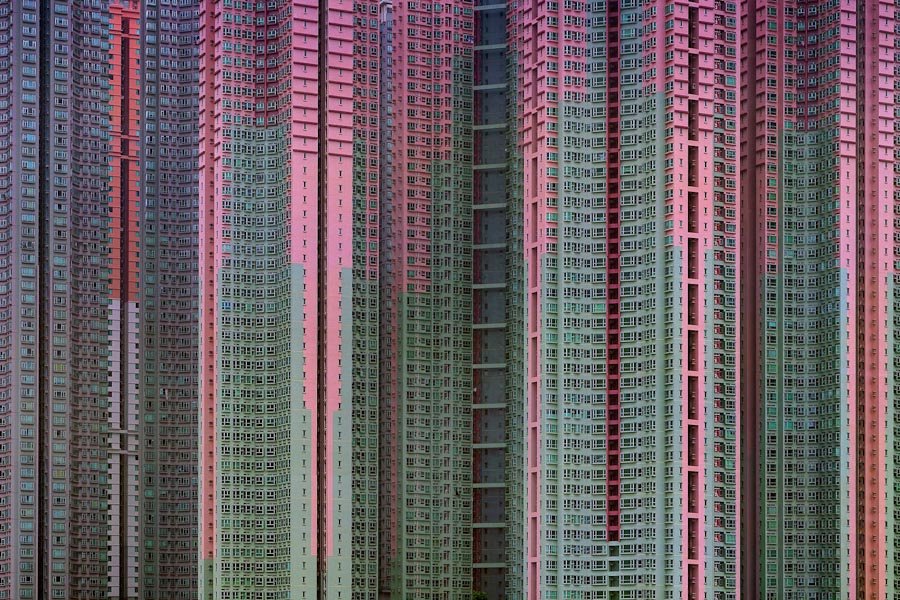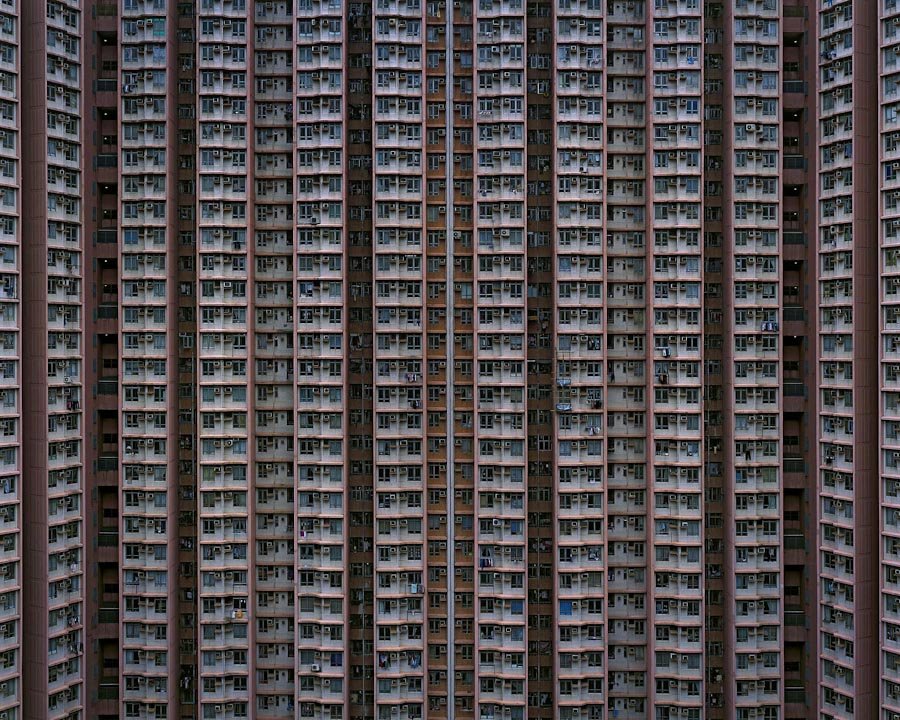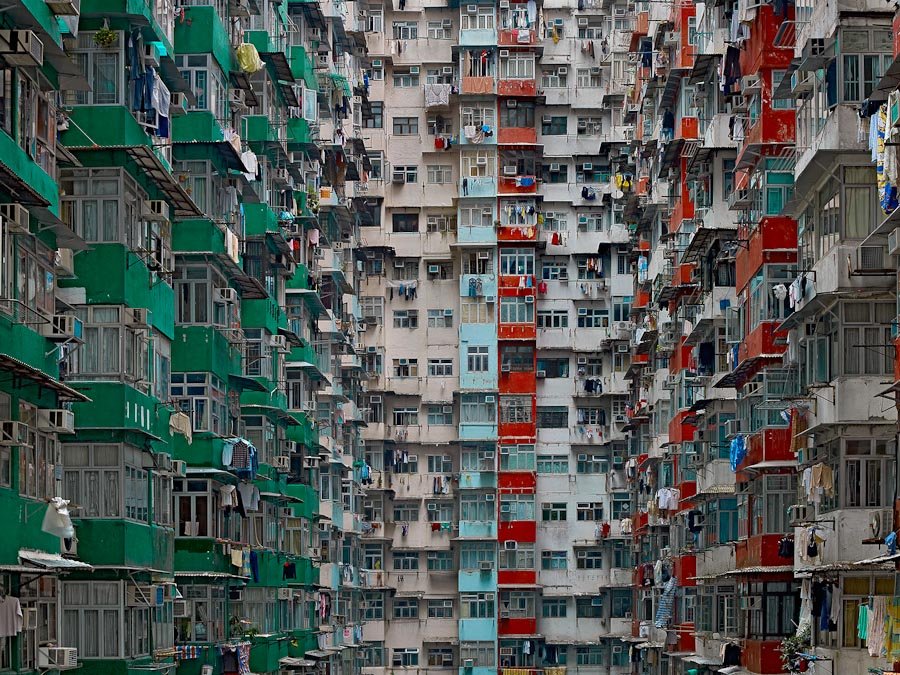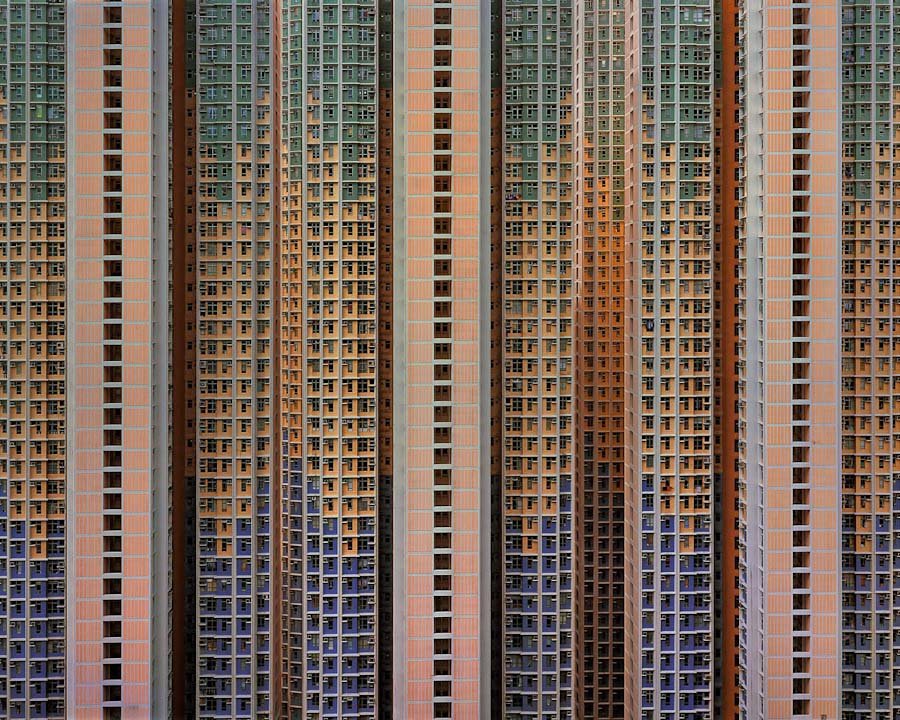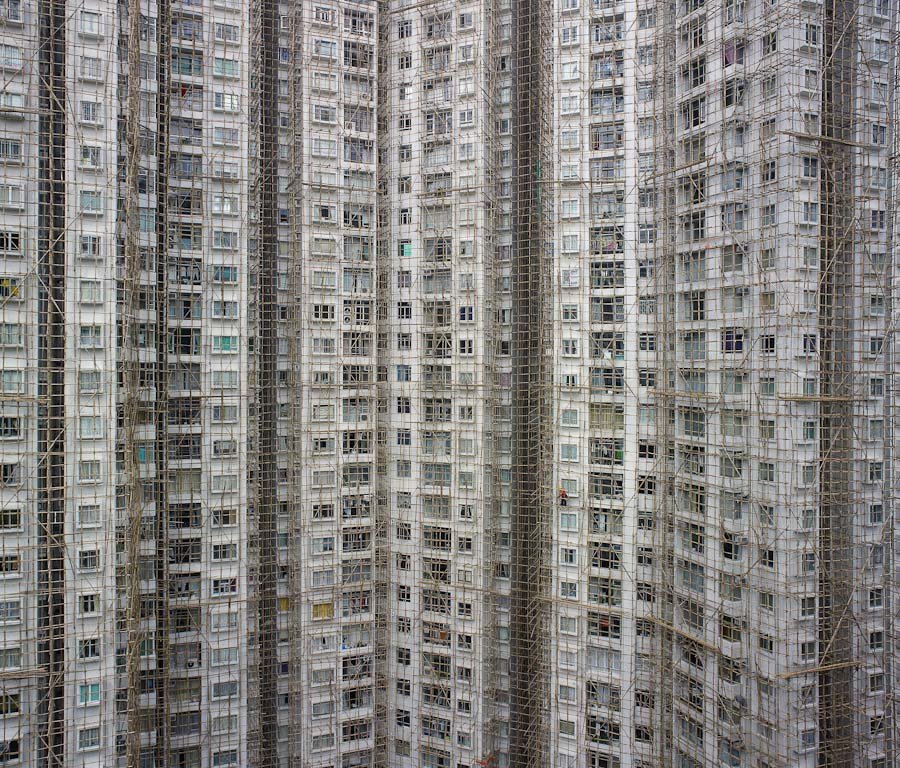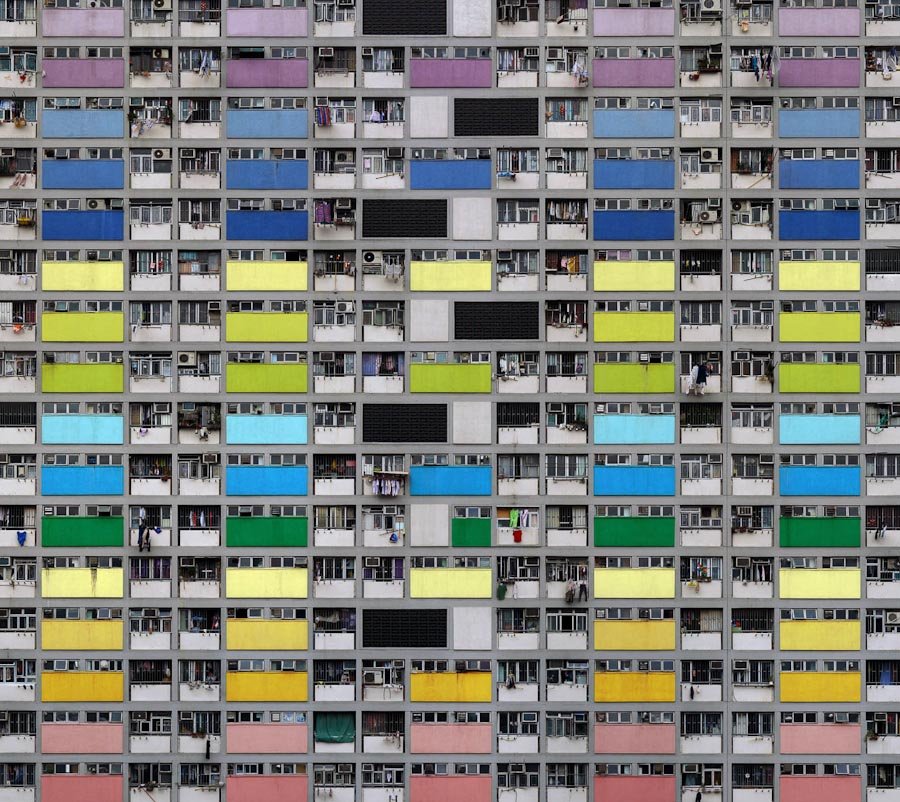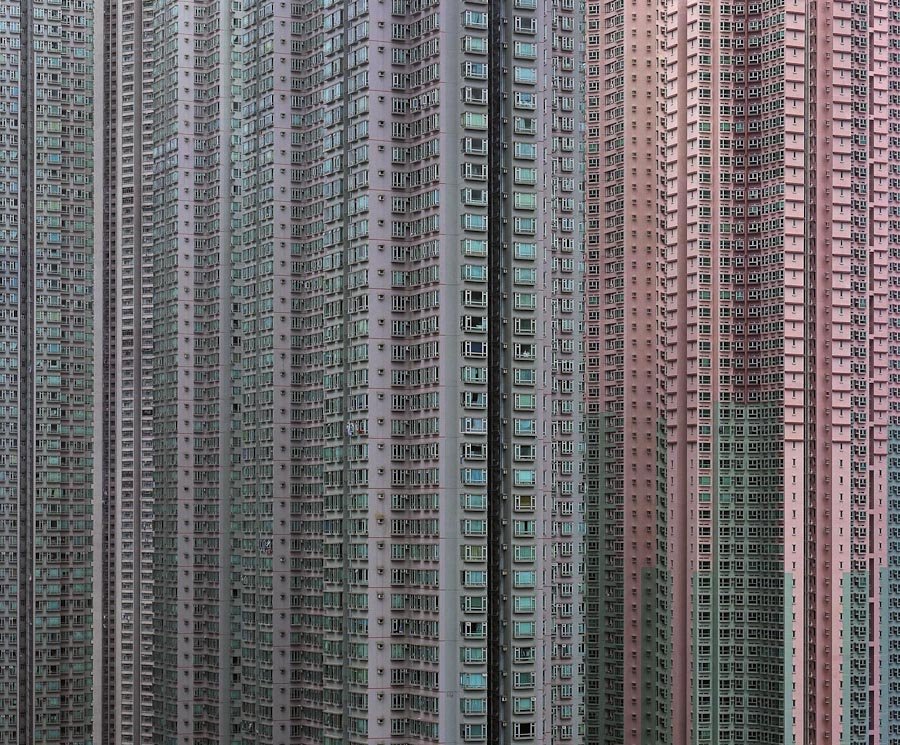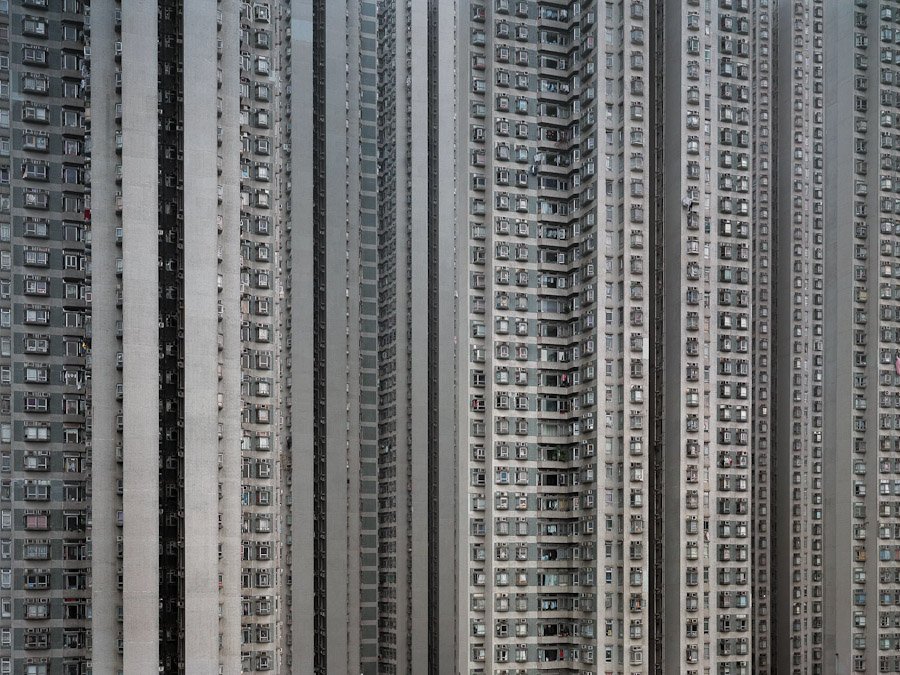Architecture of Density
By using a diverse array of perspectives and visual approaches, photographer Michael Wolf uses his camera to reveal the human energy that flows through the contemporary city. In so doing, he establishes himself not only as a photographer of the urban structure, but of the myriad ways in which people adapt to and reconfigure this rapidly changing environment, thereby providing us with a fascinatingly intricate portrait of life in the city.
What distinguishes Michael Wolf’s Photography from others is his acute ability to find the symbolic value in those seemingly insignificant details that so often go unnoticed. From this perspective, Wolf has been able to produce a body of work, which deals with the more universal reality of contemporary city life.
In his best known series on Hong Kong’s highly compressed, often brutal architecture, Architecture of Density, Wolf uses the city’s sky-scraping tower blocks to great effect, eliminating the sky and horizon line to flatten each image and turn these façades into seemingly never-ending abstractions.
Beyond the stark beauty of these compositions, Wolf’s studies of the thick concrete skin of the city make us wonder about the thousands of lives contained within each frame.
Although Hong Kong is all but deserted in these images, minute signs of life creep to its surface… a shirt hanging out to dry or a silhouette behind a blind. Despite the stifling compression of this architecture, Wolf’s compositions are laced with evidence of people’s ability and need to express their individuality within these formal structures.
The formalism and deadpan approach of architecture of density echoes the work that emerged from the Dusseldorf School of Bernd and Hilla Becher. Like the work of Sndreas Gursky or Thomas Struth, Wolf’s photographs reveal a desire to document and connect with the world around him, but with a contemporary visual approach.
Contrary to the lyrical drama of ‘classic’ documentary photography, these images are coolly detached from their subject and the photographer’s presence behind the camera is barely perceptible.
The work on the architecture of Hong Kong can also be linked to the new photographic approaches that emerged in the late 1960s and 1970s in the United States.
The landmark 1975 exhibition, new topographics: photographs of a man-altered landscape, brought together a group of photographers who, in the sprawling post-industrial landscapes of the new American West, found a mirror for the transformation of the structure of American society. READ MORE >>>

